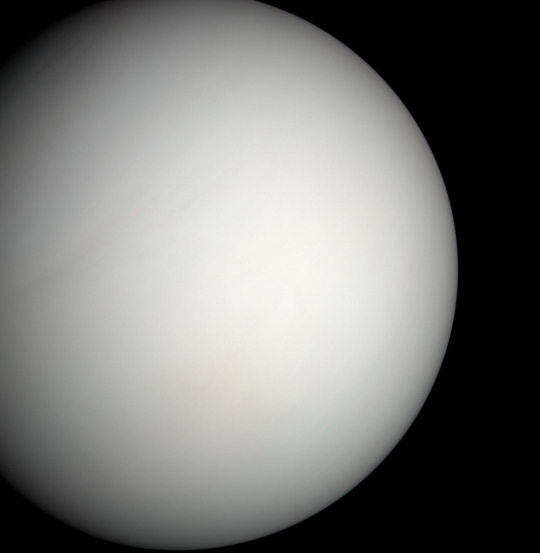#venera program
Text

Surface of Venus captured by the Venera 13 probe (1982)
6 notes
·
View notes
Text
Hi, so, I wanted to highlight something I learned a while back but didn't think to share here iirc
basically here in the US we have a very NASA centric view of the history of space exploration (for obvious reasons) and the accomplishments of other space programs are rarely celebrated if not downright ignored. The Soviet space program accomplished a TON of stuff that is often forgotten about around here. We love to relish the fact that NASA put the first astronauts on the moon, but the Soviets beat the US in basically every single other milestone before then. First satellite (Sputnik) first unmanned craft, first animal in space (Laika the dog) first manned craft and even first EVA (extravehicular activity) in space. Not only that, they deadass put unmanned probes with cameras ON THE SURFACE OF VENUS!
That's right, on the surface of another planet. I can't believe I was never made aware of this until so recently, it's shocking to me. There's color photographs of what the surface of Venus looks like. This is an absolutely monumental achievement and it happened so long ago and I didn't even know because the only things I've been taught about space travel are about NASA.
The images are really unbelievable, you guys should take a look at the article. Some I've seen are like, "reconstructions" that kinda put together the few existing images to form like, a proper landscape, but even just the raw images are incredible. We actually know what the surface of another planet looks like, other than Mars. That's buck wild. And you know what, while researching and writing this, I've JUST learned that the first Mars lander? That was Soviet as well!
It's insane how a country can present the world in such a narrowly nationalistic way that accomplishments like these might as well never have happened to a modern American. I wanna take a few moments to shout out nations other than America that have accomplished feats of space exploration. You can find a full list on this Wikipedia article: https://en.wikipedia.org/wiki/List_of_government_space_agencies
Judging by the table on that article, there have been 77 space agencies as of 2024, 70 of which are/were national agencies and 7 of which are international organizations. Some especially impressive ones, the agencies that have put an astronaut in space, operate satellites, build satellites and/or spacecraft parts, and are capable of retrieving scientific payloads from space, are the following:
-China National Space Administration
-European Space Agency
-Indian Space Research Organisation (I knew about this one!)
-Iranian Space Agency
-Roscosmos State Corporation for Space Activities (Russia)
-Soviet Space Program
-NASA :)
I find it comforting to know how much of the world has engaged in space exploration. There's this idea in Science Fiction of the Earthling as a unified identity. In optimistic fiction we see all nations coming together to push out into the stars, combining all their resources to ensure our future, and while cooperation has not always been our strong suit, (they didn't call it the Cold War for nothing) things like the International Space Station and other joint scientific programs have been a testament to that idea. Seeing so many countries on this list makes me feel like humanity does have a future in the stars after all.
#nasa#space#space program#international space station#science#sputnik#technology#soviet space program#venera 7#venus#feel good
3 notes
·
View notes
Text
So Venus is my favorite planet in the solar system - everything about it is just so weird.

It has this extraordinarily dense atmosphere that by all accounts shouldn't exist - Venus is close enough to the sun (and therefore hot enough) that the atmosphere should have literally evaporated away, just like Mercury's. We think Earth manages to keep its atmosphere by virtue of our magnetic field, but Venus doesn't even have that going for it. While Venus is probably volcanically active, it definitely doesn't have an internal magnetic dynamo, so whatever form of volcanism it has going on is very different from ours. And, it spins backwards! For some reason!!
But, for as many mysteries as Venus has, the United States really hasn't spent much time investigating it. The Soviet Union, on the other hand, sent no less than 16 probes to Venus between 1961 and 1984 as part of the Venera program - most of them looked like this!

The Soviet Union had a very different approach to space than the United States. NASA missions are typically extremely risk averse, and the spacecraft we launch are generally very expensive one-offs that have only one chance to succeed or fail.
It's lead to some really amazing science, but to put it into perspective, the Mars Opportunity rover only had to survive on Mars for 90 days for the mission to be declared a complete success. That thing lasted 15 years. I love the Opportunity rover as much as any self-respecting NASA engineer, but how much extra time and money did we spend that we didn't technically "need" to for it to last 60x longer than required?
Anyway, all to say, the Soviet Union took a more incremental approach, where failures were far less devastating. The Venera 9 through 14 probes were designed to land on the surface of Venus, and survive long enough to take a picture with two cameras - not an easy task, but a fairly straightforward goal compared to NASA standards. They had…mixed results.
Venera 9 managed to take a picture with one camera, but the other one's lens cap didn't deploy.
Venera 10 also managed to take a picture with one camera, but again the other lens cap didn't deploy.
Venera 11 took no pictures - neither lens cap deployed this time.
Venera 12 also took no pictures - because again, neither lens cap deployed.
Lotta problems with lens caps.
For Venera 13 and 14, in addition to the cameras they sent a device to sample the Venusian "soil". Upon landing, the arm was supposed to swing down and analyze the surface it touched - it was a simple mechanism that couldn't be re-deployed or adjusted after the first go.
This time, both lens caps FINALLY ejected perfectly, and we were treated to these marvelous, eerie pictures of the Venus landscape:

However, when the Venera 14 soil sampler arm deployed, instead of sampling the Venus surface, it managed to swing down and land perfectly on….an ejected lens cap.
#space#space history#venus#NASA#Venera#spost#I will talk all day about venus#ask me about venus floating sky cities#unpopular opinion venus > mars#this is probably my favorite space history story#the surface of venus is made of lens caps#don't try to tell me the universe doesn't have a sense of humor#well#I guess its more that people have a sense of humor and we happen to live in the universe
28K notes
·
View notes
Text
I LOVE THE VENERA PROGRAM AND THE SOVIET UNION SLAMMING SHIT INTO VENUS AND TAKING THE ONLY PICTURES OF ITS SURFACE.
YOU DON'T SEE NASA DOING THAT SHIT.
5 notes
·
View notes
Text
tagged by @cat-boy-tits
15 Questions for 15 Mutuals
Are you named after anyone?
When my dad suggested what would become my birth name, my mom exclaimed, "you want to name her after a chipmunk????"
so yeah, a chipmunk
On the other hand, I named myself after a pokemon
Do you have any kids?
Nah, I love hanging out with my friends' kids but I couldn't handle having my own I think
Do you use sarcasm a lot?
Nah, one of the ways in which I'm autistic is I'm never confident sarcasm will land right
When was the last time you cried?
Yesterday? I think yesterday. Idk man it's been a stressful last few weeks
What’s the first thing you notice about people?
The way they phrase things. I love people whose vocab or way of speaking is a little unusual, it makes my eyes do the happy cat pupil dilation thing but inside
Eye color?
Very pale bluegreen
What sports do you/have you played?
I lettered in high school because of Quiz Bowl and to this day I think that is hilarious for me (I am Not athletic)
Any special talent?
I can do basic mental arithmetic extremely quickly and accurately, I own at that one death minigame in Trivia Murder Party
Where were you born?
The US (specifically Virginia)
Scary movies or happy endings?
Scary movies 99% of the time
Do you have any pets?
None that I would call mine exactly
How tall are you?
5'2
What are your hobbies?
FFXIV, dice collecting, baking
Favorite subject in school?
It was most sciences, but specifically biology
Dream job?
I want to own a bakery/cafe with a queer-positive sex toy shop downstairs
tagging:
@bobisonlybob @mraof @field-of-sungflowers @leafbarrett @torterracotta @bigbadbeowulf @heyimkarby @venera-program @aqueerkettleofish
9 notes
·
View notes
Text
By: Paul Schwennesen
Published: Jan 22, 2024
Higher ed is certainly facing its reckoning — “reaping the whirlwind” comes instantly to mind. As I watch Harvard squirm under the international spotlight, I find it difficult to be very sympathetic. According to an email I received from its new interim president, Harvard is being “subjected to an unrelenting focus,” a “persistent scrutiny” that has pushed the college into an “extraordinarily painful and disorienting time.” All I can honestly say is, I know how you feel…
I graduated from Harvard years ago and can’t pretend to have kept my finger perfectly on the pulse of campus politics there. Nevertheless, I am a newly minted PhD from a mainstream university and I can easily extrapolate. My experience on campus these past few years has, I do not doubt, mirrored exactly the kind of shenanigans that has gotten Harvard into such “painful” straits. And without wishing to sound too gleeful, I admit to feeling a certain sense of gratification at watching academia reap what it has sown.
I entered my doctoral program in history in a fit of innocence. I genuinely sought a community of the mind — a place where ideas could be freely exchanged and interesting knowledge gleaned. While the experience was not altogether miserable, I have to say my overarching sensation after getting the degree was one of relief. Yes, yes, everyone is relieved to finish a doctoral degree, but there was something else compounded on top: the sense of finally not having to watch what one says, the feeling I imagine one would feel on leaving a political reeducation camp. No more eyes, no more veiled threats, no more biting your tongue.
I had been ostracized, for instance, at the very outset by a clique of the exquisitely sensitive for my attempts at open conversation about gender politics. I wondered aloud if the au courant trans-movement might itself be a “social construct” and was told that my questions were “violent” and could not be tolerated on campus.
During my portfolio exam, when I was declaiming on the perennial ‘Man vs. Nature’ tension, I had a tenured professor stand up and order me to “STOP saying man” and to only use the word “human.” The incident was so embarrassingly egregious, it derailed my exam. It even caused a neutral member (a paleontologist, bless him) to submit a formal complaint to the dean. The complaint went nowhere of course.
After a few years, I didn’t even bother to apply for most of the choicest scholarship opportunities, since they overtly proclaimed that “preference will be given to historically disadvantaged students.” I didn’t presume that “historically disadvantaged” meant someone like me — rural, mid-life, veteran, and leftist-nonconforming…
Not that it is any kind of revelation, but the growing chorus of concern over out-of-control Diversity, Equity, Inclusion (DEI) thought-control is well earned. In none of my classes could students or faculty engage in anything like open inquiry about race or gender. A discussion about the history of enslaved Europeans alongside the history of enslaved Africans? Crickets. A contextualization of gender roles that defied the standard “oppression” narrative? No.
After years of reading my work with nothing but praise, my advisor suddenly required me at the eleventh hour to replace the word “Indian” with something more palatable (ludicrously, the Spanish “Indio” would suffice). Another member of my committee offered to take umbrage at my comparisons of documented ethnohistoric rituals on Native Americans’ behalf, a patently paternalistic and insensible thing to do.
Look, I’m not claiming to have been surprised. I knew what I was getting into and had harbored suspicions from the outset. Moreover, I am quite prepared to admit that some of the disaffections with my academic experience were self-induced. But to ignore the pervasive cloud of weird, semi-threatening tension which swirls around a modern faculty corridor does a disservice to a long and venerable academic tradition. Students like me have not been well supported or encouraged intellectually these last years. Academic activism has squandered the talents of an entire generation and appears hellbent on doing so again.
Yet, for all that, there is an optimistic silver lining. Now, for the first time in recent memory, the hyper-politicized woke orthodoxy is being successfully challenged. The cracks in the ivory tower have become fissures for the whole world to see. My warning to my college-aspiring children that I won’t spend a brass farthing on tuition seems to be an increasingly widely shared sentiment. Meanwhile, The Harvard Business Review, attempting to make sense of the precipitous collapse of DEI initiatives, now advises companies to “explore DEI actions that are identity-neutral but remove bias from the workplace. Examples include creating structured recruitment and promotion processes with clear, transparent, merit-based criteria…” In other words, “enough with the racism already.” Maybe the lunacy is coming to an end.
Harvard’s high dudgeon over outside scrutiny is indicative. And despite all the “painful and disorienting” turmoil at being held to account, the message seems to be getting through. The interim president tells us that “[r]ededicating ourselves to free inquiry and expression, in a climate of inclusion and a spirit of mutual respect, has never mattered more. Upholding a paramount commitment to academic excellence has never mattered more. Pursuing the truth has never mattered more.” Indeed. Maybe the reckoning higher ed faces will begin the long course-correction it so badly needs. Maybe it will even return to the sort of place I had hoped to go.
#Paul Schwennesen#Harvard#Harvard University#Claudine Gay#diversity equity and inclusion#DEI bureaucracy#diversity#equity#inclusion#academic corruption#intellectual integrity#higher education#luxury beliefs#academic freedom#academic integrity#religion is a mental illness
5 notes
·
View notes
Text
Honestly we as a society should talk more about the '78 - '83 Venera probes the Soviets sent to Venus. It's not only a huge achievement, not only the only images of another planet's surface we had for two decades, but it's also just a wild story in general of repeated partial failures that the soviet space program just wouldn't accept. It's a wild tale of a space program both being too fast and loose with science and million dollar equipment, but also pure tenacity to not allow equipment failures that still bore fruit to stop a frenzied attempt to get full findings. Other people would've looked at equipment failure that still took partial photos and said, 'that's enough for us', but they just refused again and again until they had that full picture with no failures.
#I wish programs still had this tenacity and drive for success and exporation#but it's also a wild story of absolute incompetent and reckless spending and engineering#but y'know#anyway#Venus#Space Exploration
3 notes
·
View notes
Text

21 Ekim 2023 tarihli program kaydı.
Güncel elektronik müzik kayıtlarından bir seçki // A selection of recent electronic recordings. Download.
01 – Odalie – Battements
02 – Purelink – Stadium Drive
03 – Seb Wildblood ft. Laraaji – Hear / Here
04 – Actress – Game Over (e 1)
05 – The Haxan Cloak – N/Y
06 – Venera – Swarm
07 – dgoHn & Badun – VHS Copy 1979
08 – Ricardo Laine – The High Tide
09 – Colleen – Subterranean - Movement II
10 – Dasha Rush – Summer Photons
11 – Brueder Selke – B3lk4 & Str3lk4
3 notes
·
View notes
Text
Apollo

Doubt thou the stars are fire; Doubt that the sun doth move; Doubt truth to be a liar; But never doubt I love.
William Shakespeare, Hamlet, 1601
The matrimony between statecraft and the conquest of the cosmos birthed the space industry in a concerted effort to seize the final frontier. A triumvirate of government, academia and corporations found common cause in the geopolitics of the Cold War to mobilize minds and machines against the Soviets whose Sputnik orbited the earth by 1957. This shot across the bow of a lone satellite in the outlands of the stars rattled American exceptionalism insofar as policymakers perceived it to be an existential threat over their monopoly of the sciences. The slender orb of 83.6kg evoked paranoia due to how swift the Soviet Union transitioned into a knowledge-based economy. Any robust space industry cultivates a panoply of ancillary sectors from vast spillovers to fabricate composite metals, semiconductors, liquid fuels and other things of this ilk. Prima facie the coup was prodigious by itself but the infrastructure behind it left Washington reeling. Manifestly the communists confirmed themselves to be lightyears ahead of their counterparts in the research of science, technology, engineering and mathematics (STEM). The postwar propaganda value of boasting the know-how of rocketry to escape earth’s gravity rallied brains and brawn around the flag in a species of a Manhattan Project redux.
In the infancy of the space derby the torrent of Soviet victories intensified rivalries in the bipolar world. The canine Laika became the first mammal to voyage the ether in 1957. Luna 2 probed the Moon’s surface on the maiden trip of its kind in 1959. Luna 3 purveyed to the world its first glimpse of the far side of the Moon in 1959. Venera 1 established a record as the first interplanetary vehicle to effect a flyby of Venus in 1961. Cosmonaut Yuri Gagarin followed suit by entering the firmament as the first human in 1961. Cosmonaut Valentina Tereshkova defied gender norms as the first woman to orbit earth in 1963. Cosmonaut Alexei Leonov partook in the first spacewalk in 1965. Mars 3 captured immortality as the first manmade craft to land on the Martian planet in 1971. The string of triumphs and their rapid succession aroused awe and dread on terra firma amongst the cognoscenti in the Beltway. Such a truncated turnaround from the ravages of WWII called into question whether in fact the communist model of governance was indeed leaps and bounds ahead of free market capitalism. The gulf of a knowledge gap that differentiated the Soviet space program from the amorphous one in America left skeptics of the former agog. For a time the legion of scientists under the auspices of the politburo’s central planning seemed omniscient.
Such centralization of the bureaucracy unmolested by partisanship or a farrago of stakeholders created small skunkworks under the nomenclature of OKBs wherein discoveries were made at the cadence of a metronome. Not at all enigmatic in retrospect this quantum leap also stemmed from its piracy that was more rapacious than America’s. Whereas Washington acquired intellectual assets via Operation Paperclip the Soviet’s variant of Osoaviakhim in 1946 conscripted a whole brigade of German minds to catapult space exploration. Wernher von Braun and a cohort of his scientists from Peenemünde were spirited away to Washington whilst Moscow’s dragnet repatriated exponentially more in human capital and technology (Neufeld 2004). The poaching of knowledge midwifed the series of records monopolized by the superpower in the incipient years of the space race. The spoils of war from German heuristics wedded to indigenous capabilities proved to be a boon for the Soviets who were keen to parade the merits of communism. Indeed the Kremlin’s industrial complex revolutionized space travel for the sake of ideological warfare against its nemesis. The disparities were quite vast. America’s Project Mercury sought to put an astronaut in orbit as the Soviet’s Luna missions were already plumbing the Moon in 1959.
In the prelude to the moonshot of Apollo the saga of America’s space industry begins with the importation of V-2 rockets from the Nazi regime which whetted the enthusiasm for escaping earth’s gravity. Under Project Hermes the autopsy on these missiles saw the technology reverse engineered in an effort to breach the Karman Line of the upper atmosphere. A whole 300 boxcars of miscellaneous V-2 hardware smuggled from Germany made their way to the White Sands Proving Ground in New Mexico where 67 units were reassembled between 1946 and 1951 (Buchanan et al. 1984). Telemetry data from subsequent tests telescoped the learning curve to spur the development for Apollo’s workhorse known as the Saturn V rocket whose pedigree veritably traces back to the V-2s. At this early juncture it was the firm General Electric with which Washington rendezvoused so as to scrutinize these artifacts for their ballistics and gyrostabilized guidance systems. A constellation of scientists were contracted to harvest the secrets hidden within the entrails of the V-2s in a bid to marshal propulsion and re-entry technologies into maturity. Borne from this fact-finding mission did GE design avionics that later computed the terabytes of data for the Apollo moonshot. The firm would be the first embraced in the bosom of the space program.
Post the industrial policy of this public-private partnership the space industry sired the National Aeronautics and Space Administration (NASA) as its guardian in 1958. The institution’s formation heralded a departure from space’s militarization towards its exploration to demystify the mysteries of the cosmos. The separate track charted a course to the stars for civilian ends at variance with the Defence Advanced Research Projects Agency (DARPA) that put a premium on technology for martial use. Founded fourth months prior to NASA this other agency’s mandate was written in rebuttal to the USSR’s launch of Sputnik. Within this bifurcation the raison-d’être for each hinged on war in the case of DARPA and peace in the case of NASA. The civilian program’s prime directive as distilled in section 102 of the National Aeronautics and Space Act of 1958 empowered the institution to one end alone of making America a leader in the Olympics of science. NASA wasted no time in engineering a stepwise roadmap between the triad of Projects Mercury, Gemini and Apollo in this chronological order. Each unique phase rested along a spectrum in the mastery of technology beginning with a manned craft in space to orbital docking and finally a lunar expedition. NASA summarily evolved into a hive of innovation.
After GE’s forensics upon reconstituting the hodgepodge of V-2 rocket paraphernalia amidst Project Hermes the next private firms entrusted with reifying America’s curiosity with outer space were Chrysler and McDonnell Aircraft. Industrial policy shovelled $277m or $2.9t in real value for its pecuniary commitment towards the first phase christened Project Mercury (DiLisi et al. 2019). The industrial heritage of Chrysler hitherto as a marque of Plymouths and Dodges appears paradoxical for such high-tolerance engineering but the firm proved its poise in WWII when it mass-produced 25,000 M4 Sherman Tanks (Davis 2007). To segue into this highbrow application the company collaborated with the prodigy von Braun who was the doyen of rocket science. Chrysler would be the proverbial blacksmith for the single-stage Redstone booster whose propulsion from 78,000 pounds of thrust bore astronaut Alan Shepard into suborbital space in 1961 (Bentley 2009). It fell to McDonnell Aircraft to manufacture the spacecraft itself meant to house the life support systems for a solitary occupant in the antipodes of space. Everything from the heat-shield for re-entry to the escape system that jettisoned the capsule with a parachute should the mission be aborted in the event of a catastrophic failure was designed by the firm.
2 notes
·
View notes
Text
ok sorry to keep talking about that stupid image but. they’re including Gemini, the Redstone rocket, and the Atlas rocket too i think on the US side. all they gave the USSR was the fucking LK lander and the N1, they didn’t include Vostok, Sputnik, Mir, Soyuz, any of the Luna probes, Venera, none of that
just the two failures the program had in the late 60s
#my posts#sorry I know it’s just an idiot on the internet but god it makes me angry when people go USA NUMBER ONE BOOTPRINTS ON THE MOON WOOOO#like shove it
4 notes
·
View notes
Text
okokok!
this is saint venera!!!!!

her reflection is mech anime inspired with a side of religious themes wherein the pilots subjected to experimentation from childhood are referred to as “saints”
while normally magitek mecha are meant to be piloted by two people, pacific rim style, venera isn’t allowed to pilot with anyone else because her mental corruption levels are simply too high. and those that don’t go insane piloting with her are labeled as her “beloved” and, well, don’t last long either
despite being part of the saint program, she’s relentlessly bullied by her peers simply because of the fact it’s more dangerous to be neutral toward her than it is to be mean to her. this is because any act of simple human decency can ALSO get you labeled her “beloved” wherein you will be killed at some point or another
i still need to work on her eyepatch design blehhhhhhhhh
4 notes
·
View notes
Text
LibreVastServitor computing stack designs 1/?

Just a quick reminder here, this is a customized computing stack manifestation game where I simply write what I desire and then let the wider universe manifest it for me whatever way that means, including personal efforts of mine. Boils down from customizing and adapting research material into a actionable series of items to manifest.

Ashur dream specifications
(mid-tower personal workstation computer)
2+ 2560x1440p monitors (one vertical, one or more horizontal)
Intel Core i5-4690 @ 3.5 GHz with its 4-cores (hoping forward to upgrade the RISC-V + OpenPOWER like processor for something decent with ~12-cores & much more open design) central processor unit
32GB of RAM
Some recent mid-range AMD GPU
64 GB Linux swap partition (mostly for virtual machines and RAMdisk partitions)
4TB+ SSD storage
Bluray burner
Floppy drive
Cassette / datasette drive
Themed GRUB bootloader
S6 init system
Arch-like package manager and software ecosystem
Customized alternative Linux kernel between Linux Libre & Zen kernel ( XanMod + Liquorix )
ZealOS, Parade, OpenBSD, OpenIndiana...
CLADO, DIS, Venera, Perseus, Maskoch, Synod, Monad, Valenz, Constans?
KDE Plasma with Liquid shell as desktop environment, complete with custom ricing, dot files & all the KDE desktop environment utilities;
Bash + Fish, Tmux, Astro-Neo-Vim with LSP, Emacs, LibreOffice Suite, Calligra, Bottles, Wine, WineTricks, QGIS, Firefox, LibreWolf, Dolphin, Konsole, Inkscape, Karbon, OpenStreetMap, GPlates, GProjector, Itch, Steam, GOG Galaxy, Lutris, Cyberpunk 2077, Ken Silverman's, FreeBASIC, Common Lisp, Godot + Qodot, VLC, MPV, .ogg / .ogv media player, musical tracker, 'Landchad.net', Brasero, K3B, FloppyFormatter, LibreCAD, AutoCAD, Blender, Kate, Qt, Nim, MUSL, C compiler, assembly monitor, HxD debugger, Rust, Swift, Kotlin, F#, C#, GNU make, NASM, Sweet Home 3D, some digital audio workstation software, Audacious, FFMPEG, Wayland, Morevna OpenToonz, some HTTP(S) web server suite, MongoDB, Hexo, Netlify CMS, RSS feed reader + generator, Pomodoro, Calendar, timely Tracker, Notion-like service, Tape, Gollum, some level editors, FreeCiv, The Sims 2, SimCity 4, Quake 1, Doom 1 & Doom 2, Markdown / Argdown, Konqueror, some WYSISYG rich media editor, some Raycaster engine, Daggerfall Unity, Portal 2, Source (1 & 2) Engine modding, some VirtualTableTop software, some remote desktop control software like VNC, OpenSSH, some distributed share storage software, Trenchbroom, StableDiffusionXL, ChatGPT open source alternative, DAO, Krita, GIMP, G'MIC & its plugins, PaintDotNet, CataclysmDDA, CataclysmBDA, Evennia, Python 3, Firefox for KDE (Developer Edition), Perl, PHP, MariaDB, lighttpd, Apache, Nginx, Themix Oomox GTK+ theme editor, Falkon, ...
Custom shell scripts, interactive REPL programming languages, some GUI programs, command aliases and dot file configurations;
?
Venera (computation "deque" project)

Original components:
RISC-V + OpenPOWER = LibreVast (tribble word-based open hardware architecture designed for daily use & tinkering developer purposes)
Tropix + OGAS = Nucleus (optimized distributed processing micro-kernel, like 'Inferno' & 'Plan9')
RedSeaFS + Parade = CLADOgram (direct-access rich media agentive filesystem & file server suite)
KDE + POSIX-compilant CDE = VUE (lightweight desktop environment with profound customization options)
CommonLisp w/ CLOS + Nim = Pan-Lisp (both low-level and high-level REPL programming language)
Existing components:
Fish, Tmux, Vim, Konsole, Flatpak, Git
KDE Plasma w/ Liquid shell alternative
Konqueror, LibreWolf
GIMP w/ G'MIC & Krita w/ G'MIC
Hexo (flat blog self-hosting web server), MariaDB, "Landchad.net" stuff
QEMU, Wine, Wine-tricks, Proton, Bottles, Lutris
Trenchbroom, Godot w/ Qodot
Kate, KDevelop, Okteta, Mousepad, Notepadqq
[...]
2 notes
·
View notes
Text

NEW FROM FINISHING LINE PRESS: Soviets on Venus by Thomas Simmons
ADVANCE ORDER: https://www.finishinglinepress.com/product/soviets-on-venus-by-thomas-simmons/
#Soviets on #Venus explores a remote jeweled casket. It construes an alien neighbor as it reconceptualizes an underrated scientific breakthrough: the series of unnamed probes piloted to #Venus by the #USSR between 1961 and the mid-80’s. The missions were called the Venera program. These fantastical spacecraft transmitted data, vivid photographs, and poetic energy back to Earth. Some piloted through the morning star’s magma-hot, swampy atmosphere as balloons. A few smashed themselves into aeolian canyons or upon alien tufa. A handful simply melted away into silvery pools. And several ended in disaster. These fantastic probes form a sediment of verse from which a strange beauty emerges.
PRAISE FOR Soviets on Venus by Thomas Simmons
Only the dexterity of a poet like Simmons could illuminate the tragic furrows where the trauma of socialist politics overtakes legitimate scientific inquiry. There is a revelation here, and a quiet restlessness.
—Gregory Kipp, Geological Engineer
Weaving thoughts and images and historical facts together in a poetry which maintains a sparse lyricism, Simmons’ narrative is not only vastly more entertaining than most prose histories, but it gives the reader a unique advantage to imagine and reimagine the story that is being told.
–Cliff Cunningham, Research Fellow, University of Southern Queensland and author of Asteroids
Is the verse collection Soviets on Venus good or bad? Yes. Find out for yourself!
–Frank Pommersheim, Professor Emeritus, Knudson School of Law and author of Braid of Feathers
Please share/repost #flpauthor #preorder #AwesomeCoverArt #read #poems #literature #poetry #USSR #venus #space
#poetry#preorder#flp authors#flp#poets on tumblr#finishing line press#small press#book cover#books#publishers#poets#poem#smallpress#poems#venus#space science#ussr (former soviet union)
3 notes
·
View notes
Text
The last photo from the surface of Venus is now 40 yrs old! The Venera-14 lander reached the surface in 1982, lasting 52 minutes in Venus' temperature of 450°C (847°F)!
Credit: Soviet space program

2 notes
·
View notes
Text
Events 8.17 (after 1945)
1947 – The Radcliffe Line, the border between the Dominions of India and Pakistan, is revealed.
1949 – The 6.7 Ms Karlıova earthquake shakes eastern Turkey with a maximum Mercalli intensity of X (Extreme), leaving 320–450 dead.
1949 – Matsukawa derailment: Unknown saboteurs cause a passenger train to derail and overturn in Fukushima Prefecture, Japan, killing three crew members and igniting a political firestorm between the Japanese Communist Party and the government of Occupied Japan that will eventually lead to the Japanese Red Purge.
1953 – First meeting of Narcotics Anonymous takes place, in Southern California.
1955 – Hurricane Diane made landfall near Wilmington, North Carolina, and it went on to cause major floods and kill more than 184 people.
1958 – Pioneer 0, America's first attempt at lunar orbit, is launched using the first Thor-Able rocket and fails. Notable as one of the first attempted launches beyond Earth orbit by any country.
1959 – Quake Lake is formed by the magnitude 7.2 1959 Hebgen Lake earthquake near Hebgen Lake in Montana.
1960 – Aeroflot Flight 036 crashes in Soviet Ukraine, killing 34.
1962 – Peter Fechter is shot and bleeds to death while trying to cross the new Berlin Wall.
1969 – Category 5 Hurricane Camille hits the U.S. Gulf Coast, killing 256 and causing $1.42 billion in damage.
1970 – Soviet Union Venera program: Venera 7 launched. It will become the first spacecraft to successfully transmit data from the surface of another planet (Venus).
1976 – A magnitude 7.9 earthquake hits off the coast of Mindanao, Philippines, triggering a destructive tsunami, killing between 5,000-8,000 people and leaving more than 90,000 homeless.
1977 – The Soviet icebreaker Arktika becomes the first surface ship to reach the North Pole.
1978 – Double Eagle II becomes first balloon to cross the Atlantic Ocean when it lands in Miserey, France near Paris, 137 hours after leaving Presque Isle, Maine.
1985 – The 1985–86 Hormel strike begins in Austin, Minnesota
1988 – President of Pakistan Muhammad Zia-ul-Haq and U.S. Ambassador Arnold Raphel are killed in a plane crash.
1991 – Strathfield massacre: In Sydney, New South Wales, Australia, taxi driver Wade Frankum shoots seven people and injures six others before turning the gun on himself.
1998 – Lewinsky scandal: US President Bill Clinton admits in taped testimony that he had an "improper physical relationship" with White House intern Monica Lewinsky; later that same day he admits before the nation that he "misled people" about the relationship.
1999 – The 7.6 Mw İzmit earthquake shakes northwestern Turkey with a maximum Mercalli intensity of IX (Violent), leaving 17,118–17,127 dead and 43,953–50,000 injured.
2004 – The National Assembly of Serbia unanimously adopts new state symbols for Serbia: Bože pravde becomes the new anthem and the coat of arms is adopted for the whole country.
2005 – The first forced evacuation of settlers, as part of Israeli disengagement from Gaza, starts.
2005 – Over 500 bombs are set off by terrorists at 300 locations in 63 out of the 64 districts of Bangladesh.
2008 – American swimmer Michael Phelps becomes the first person to win eight gold medals at one Olympic Games.
2009 – An accident at the Sayano-Shushenskaya Dam in Khakassia, Russia, kills 75 and shuts down the hydroelectric power station, leading to widespread power failure in the local area.
2015 – A bomb explodes near the Erawan Shrine in Bangkok, Thailand, killing at least 19 people and injuring 123 others.
2017 – Barcelona attacks: A van is driven into pedestrians in La Rambla, killing 14 and injuring at least 100.
2019 – A bomb explodes at a wedding in Kabul killing 63 people and leaving 182 injured.
0 notes
Text
The Venera program: Interplanetary probes from behind the Iron Curtain
The Pioneer and Voyager probes the United States sent to explore the outer planets in the 1970s are often, and accurately, lauded as historic interplanetary achievements. That’s partly because, equipped with the Pioneer Plaque and the Voyager Golden Record, these objects are ostensibly meant to be found by aliens someday, helping them easily burrow into public consciousness. Similarly, robotic explorers to Mars, including the Viking landers and the Sojourner, Spirit, Opportunity, and Curiosity rovers, take innumerable headlines, and they’re often even given anthropomorphized personalities.

Almost forgotten, however, are the ambitious Soviet exploration missions of Venus. Beginning at the dawn of the Space Age in the late 1950s, the Soviets worked to design and construct a series of Venus probes. And for almost 30 years, they built and flew the interplanetary spacecraft as part of the Venera program — carrying out rather impressive feats, even by today’s standards.
In the early 1960s, the Cold War was in full swing and the Space Race was on. The Soviets were eager to notch as many “firsts” as they could in all realms of spaceflight. At that time, they had a better heavy-lifting capability than the United States. This allowed them to build and launch larger spacecraft, both manned and unmanned. And by using four-stage rockets and an advanced telemetry system, the Soviets could also mount missions to the difficult-to-reach inner planets.
Venera 1, the first probe in the series of Soviet Venus missions, weighed in at an impressive 1,400 pounds (at just 184 pounds, the first satellite, Sputnik 1, was a mere featherweight in comparison). Somewhat resembling a Dalek from Doctor Who, the Venera 1 probe was spin stabilized and packed with instruments, including a magnetometer, Geiger counters, and micrometeorite detectors. And like many of its successors, the interior of the probe was pressurized to just over one atmosphere with nitrogen gas to help the instruments function at a stable temperature.
However, the first Venera 1 probe never made it out of Earth orbit. And the second attempt, launched February 12, 1961, failed en route to Venus, though it did pass within about 62,000 miles (100,000 kilometers) of the planet.

Venera 2, which greatly resembled Venera 1, was built to fly past Venus, during which it would record information and transmit it back to Earth. And the probe did complete its flyby on February 27, 1966, coming within about 15,000 miles (24,000 km), but it also overheated and was never heard from again. It’s still unclear whether Venera 2 failed before or after it zipped by the distant world.

The Soviets designed the next four probes, Venera 3 through 6, to more closely study the atmosphere of our hellish neighbor. Generally weighing about 2,000 pounds (900 kilograms) each, these probes contained a suite of instruments and a detachable pod (known as a descent module) equipped with a second collection of devices that included a barometer, a radar altimeter, gas analyzers, and thermometers. Not all of these probes ended in success, though.
Venera 3 planned to land on the venusian surface, but it instead slammed into it on March 1, 1966 — officially making it the first spacecraft to crash into another planet.

Venera 4, however, spent more than 90 minutes taking measurements as it slowly floated down through the dense atmosphere of Venus on October 18, 1967. It also detected very elevated levels of carbon dioxide in the air, as well as a lack of a global magnetic field. And as expected, it eventually succumbed to the planet’s intense heat and pressure.

Both Venera 5 and Venera 6 were likewise successes, transmitting back data for more than 50 minutes as they parachuted through the atmosphere of Venus on May 16 and May 17, 1969. By helping scientists further characterize the atmospheric composition of world, these probes made it clear that Venus is highly unlikely to host life; romantic hopes of Venus as an earthly paradise were dashed.

Venera 7 included an even more ambitious descent module designed to make a soft landing on Venus, which included heavy fortifications so it could briefly survive the inhospitable conditions on the surface. Launched August 17, 1970, the flight was a success of sorts. The lander made it to the surface on December 15, 1970, but it got there after its parachute ripped, causing it to fall faster than planned for nearly 30 minutes before smacking into the surface at about 38 miles per hour (61 km/h).

Initially thought to have failed, Venera 7 did manage to transmit meaningful data for a short period of time. For example, the lander measured a surface temperature of almost 900 degrees Fahrenheit (475 Celsius), or about as hot as a brick pizza oven. Although the probe’s pressure sensor failed during descent, researchers were able to use its measurements to estimate a surface pressure of about 92 bars, which is about what you would experience if you were more than a half mile (900 meters) underwater.
Venera 8 repeated much of the Venera 7 mission, albeit without its lander falling over when it reached the surface of Venus on July 22, 1972. Venera 8’s functioning pressure sensor confirmed Venus’ oppressive atmosphere, but it also took measurements of ambient light levels on the surface, confirming that future cameras should be able to capture the venusian sights.

Of all the Soviet missions to Venus, Venera 9 through Venera 12, weighing roughly 11,000 pounds (5,000 kg) each, are the best remembered to this day. That’s mainly because their landers carried cameras that could directly image the surface.
Venturing to Venus between 1975 and 1978, several of the cameras on these probes failed, usually due to their lens caps not coming off. But nonetheless, a few managed to take and transmit the very first images from the surface of our solar system’s second planet.
The early snapshots obtained by Venera 9 and Venera 10 are haunting. Crisp, clear, and spherically distorted by their wide-angle lenses, they depict a harsh and rocky alien landscape extending out to the horizon. But the images also managed to capture the edges of the landers themselves, which reveals their distinctly Soviet design.
Venera 13 and Venera 14, both launched in 1981, were more advanced versions of the Venera 9 through 12 probes, carrying landers equipped with sophisticated acoustic devices that could tune in to the Venusian wind to gauge its speed.
Venera 15 and Venera 16, each weighing just under 9,000 pounds (4,100 kg), did not carry landers. In their place they brought highly advanced radar-based imaging systems that could map the blistering world from elliptical orbits. The Pioneer 12 probe may have been first to map Venus using radar, but Venera 15 and 16 did it better, reaching a resolution of about a mile (1 to 2 km) per pixel. The images returned by these probes were fantastically detailed, revealing broad swaths of the harsh landscape, complete with impact craters, dramatic rises, and lava-flooded basins.

The U.S. made its mark on the exploration of Venus through missions like Pioneer 12 and the wildly successful Magellan, and other craft sent by the European and Japanese Space Agencies also contributed to our understanding of our planetary neighbor next door. Still, the Soviet Venera program remains the most intense and sustained series of missions to Venus yet.
And at least for now, that doesn’t look like it’s going to change soon.
0 notes